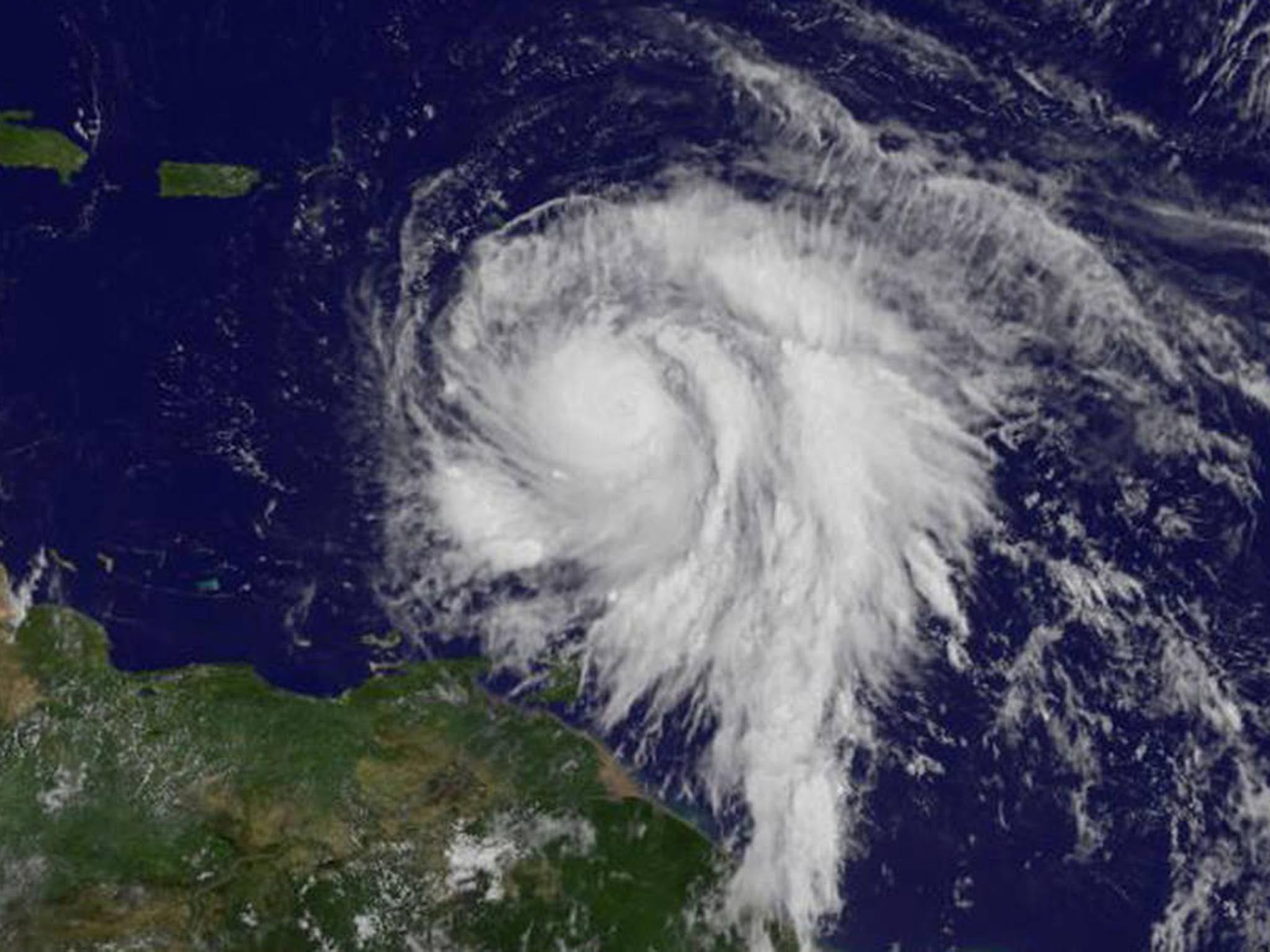Hurricane Maria strengthens to category 5 again as path heads for Puerto Rico
Storm system has already devastated island of Dominica

Hurricane Maria has become stronger again as it heads for Puerto Rico and the British Virgin Islands, threatening a chain of Caribbean islands only just recovering from the devastating Hurricane Irma.
Maria was upgraded back to a Category 5 hurricane early on Tuesday after briefly losing intensity, according to the US National Hurricane Center.
The upgrade came hours before the storm was due to hit Puerto Rico, which has a population 50 times that of the small island of Dominica.
Maria had weakened slightly — and briefly — early on Tuesday to a still major Category 4 storm after pounding the small Caribbean island nation. But the fluctuation in intensity proved to be short-lived as a hurricane hunter plane reported that it had regained the "extremely dangerous" Category 5 status, meaning it is driving wind speeds faster than 157mph.
Authorities in the US territory of Puerto Rico issued an SOS notice, warning people in wooden or flimsy homes to find safe shelter before the storm's expected arrival there on Wednesday.
"You have to evacuate. Otherwise, you're going to die," said Hector Pesquera, the island's public safety commissioner. "I don't know how to make this any clearer."
Governor Ricardo Rossello said Puerto Rico had 500 shelters capable of taking in up to 133,000 people in a worst-case scenario. He also said the Federal Emergency Management Agency was ready to bring drinking water and help restore power immediately after the storm.
A Category 5 hurricane making landfall would be "catastrophic in every way," said Roberto Garcia with the National Weather Service in San Juan. "People have to act, and they have to act now. They can no longer wait for a miracle."
Dominica Prime Minister Roosevelt Skerrit earlier captured the fury of Maria as it arrived. "The winds are merciless! We shall survive by the grace of God," Skerrit wrote at the start of a series of increasingly panicked posts on Facebook.
A few minutes later, he messaged he could hear the sound of galvanised steel roofs tearing off houses on the small rugged island.
He then wrote that he thought his home had been damaged. And three words: "Rough! Rough! Rough!"
A half hour later, he said: "My roof is gone. I am at the complete mercy of the hurricane. House is flooding." Seven minutes later he posted that he had been rescued.
Officials in Guadeloupe said the French island near Dominica probably would experience heavy flooding and warned that many communities could be submerged. In nearby Martinique, authorities ordered people to remain indoors and said they should be prepared for power cuts and disruption in the water supply.
The National Hurricane Center said Maria's top sustained winds returned to 160 mph shortly before daybreak Tuesday, with the eye of Maria located about 65 miles west-southwest of Guadeloupe. The storm was moving west-northwest at 9 mph.
Fluctuations in intensity were expected, and forecasters have warned Maria would likely intensify over the next 24 hours or longer, noting its eye had shrunk to a compact 10 miles across and warning: "Maria is developing the dreaded pinhole eye."
That generally means an extremely strong hurricane will get even mightier, said Brian McNoldy, a hurricane researcher at the University of Miami. He said it just like when a spinning ice skater brings in their arms and rotates faster.

"You just don't see those in weaker hurricanes," he said.
Hurricane warnings were posted for the US and British Virgin Islands, Puerto Rico, Guadeloupe, Dominica, St. Kitts, Nevis and Montserrat. A tropical storm warning was issued for Martinique, Antigua and Barbuda, Saba, St Eustatius, St Maarten, St Lucia and Anguilla.
Forecasters said the storm surge could raise water levels by 6 to 9 feet (1.8 to 2.7 metres) near the storm's centre. The hurricane was predicted to bring 10 to 15 inches (25 to 38 centimetres) of rain across the islands, with more in isolated areas.
The current forecast track will carry Maria about 22 miles (35km) south of St Croix in the US Virgin Islands late on Tuesday and early on Wednesday, territorial Governor Kenneth Mapp said.
"We are going to have a very, very long night," he added, urging people in the territory to finish any preparations.
Additional reporting by agencies
Join our commenting forum
Join thought-provoking conversations, follow other Independent readers and see their replies
Comments
Bookmark popover
Removed from bookmarks